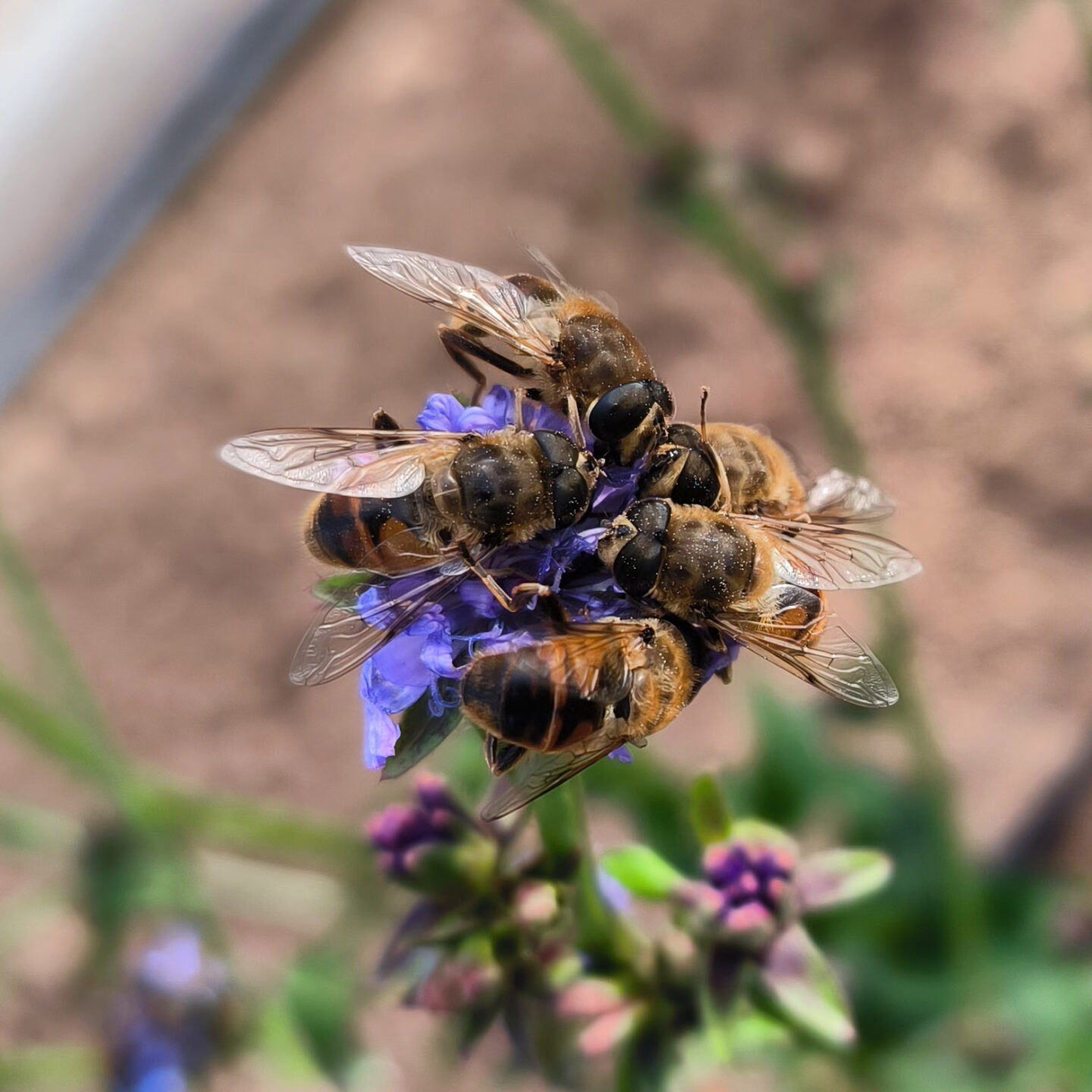What are hoverflies?
Hoverflies are dipteran insects belonging to the family Syrphidae, commonly known as “flower flies.”
They are the second-largest group of pollinators in the world, after hymenopterans (bees and bumblebees), and play an essential role in both agricultural and natural ecosystems.
Ecosystem Services Provided by Hoverflies
Hoverflies deliver key ecosystem services that benefit both agriculture and natural environments:
- Natural pollination: they contribute to the reproduction of over 500 plant species, improving crop productivity.
- Biological pest control: the larvae of some species prey on aphids, helping to reduce the need for chemical pesticides.
- Organic matter recycling: some species play a role in the decomposition of organic material, supporting soil health.
Functional Characteristics of Hoverflies
- Generalist pollinators: most hoverflies forage for accessible pollen and nectar across a wide range of flowers, making them especially effective in diverse crops and mixed farming systems.
- Specialized suction mouthparts: they possess a sucking-type mouthpart, made up of short and unspecialized components, allowing easy access to pollen and nectar from flowers of various shapes and sizes.
Why Do Hoverflies Look Like Bees but Aren’t?
Hoverflies, such as QUEENFLY® (Eristalis tenax) and GOLDFLY® (Eristalinus aeneus), mimic bees and wasps through an evolutionary phenomenon known as Batesian mimicry.
Batesian mimicry is an adaptive strategy in which a harmless species imitates the colors, shapes, or behaviors of a dangerous or unpleasant species to deter predators. In the case of hoverflies, their similarity to bees and wasps—especially their yellow and black coloration, body shape, and agile flight—serves as a visual warning.
Although hoverflies are completely harmless—they have no stinger or defense mechanism—their appearance fools predators, who avoid them by mistaking them for stinging insects.
This natural form of protection is particularly notable in the Eristalinae subfamily, to which our species belong. For example, QUEENFLY® is often referred to as the “drone fly” due to its strong resemblance to male honeybees.
Batesian mimicry has been key to the survival of hoverflies as essential pollinators in sustainable agriculture.
